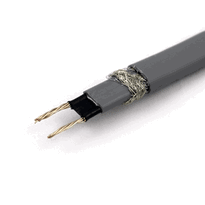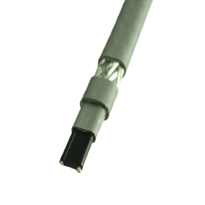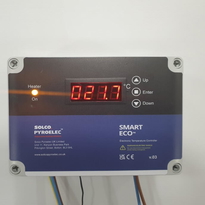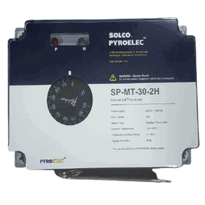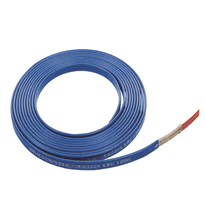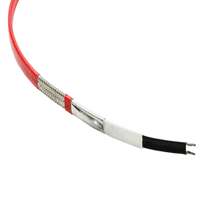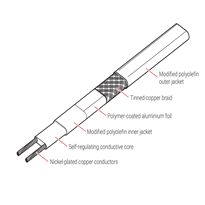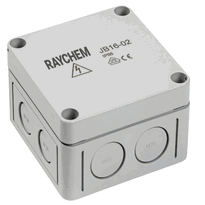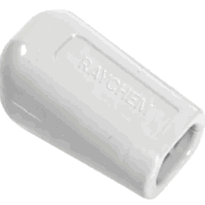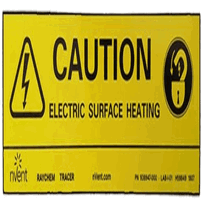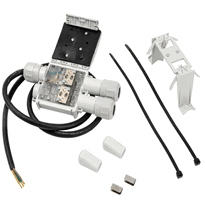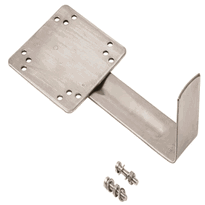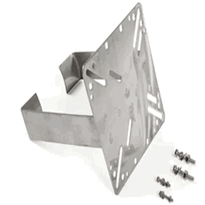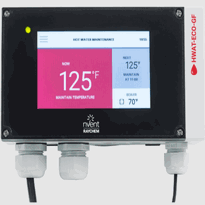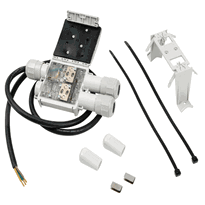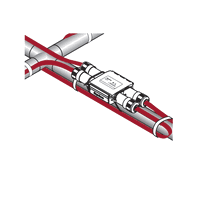Pex Heat Tape
Pex heat tape systems are engineered to prevent pipe freezing by providing a safe and reliable means of warming pipes. They are available in various types, including self-regulating and constant-wattage options, suitable for external installation when combined with adequate insulation. Proper selection of the heat tape is essential to ensure compatibility with Pex piping and to meet safety standards.
Installation should involve securing the tape at regular intervals, approximately every 30 centimeters, to ensure even heat distribution and adhesion. Following best practices, thorough insulation of the pipes and the heat tape helps maximize efficiency and protect against cold weather conditions.
These systems are cost-effective and energy-efficient, offering a practical solution to mitigating risks associated with low temperatures. Additional guidance on installation and maintenance can optimize their performance and extend their lifespan, making them a valuable investment in maintaining the integrity of Pex plumbing in colder climates.
Types of Heat Tape Suitable for PEX Pipes
When choosing heat tape for PEX pipes, it's important to understand the two main types available: self-regulating heat tape and constant-wattage heat tape. Each type is designed to meet different heating requirements and operating conditions.
Self-regulating heat tape adjusts its heat output based on the surrounding temperature. It increases heat when temperatures drop and decreases it when temperatures rise, helping to maintain a consistent thermal environment while conserving energy. This type is generally considered safe for PEX pipes, as it prevents overheating and is suitable for varying weather conditions.
On the other hand, constant-wattage heat tape provides a steady amount of heat regardless of the ambient temperature. It's particularly suitable for longer pipe runs or in areas subject to extremely cold conditions, where continuous protection is essential.
The proper choice depends on understanding specific application needs, the length of the pipe run, and the external environment. Selecting the right heat tape ensures optimal performance and safety, preventing damage to the PEX pipes and maintaining effective freeze protection.
Benefits of Using PEX With Heat Tape
The combination of PEX pipes with heat tape offers notable advantages for freeze protection and maintaining pipe integrity in cold UK climates. Heat tape provides consistent, temperature-controlled warming that prevents water inside PEX pipes from freezing, thereby reducing the risk of burst pipes and costly repairs. Electrical heat tape is designed to activate only when necessary based on the temperature, making it a cost-effective solution. PEX's high level of heat resistance, flexibility, and chemical durability harmonize well with the heat tape’s functionality. This synergy ensures a secure and long-lasting pipe system. Using self-regulating heat tape adjusts the heat output according to ambient conditions, promoting energy efficiency and helping to lower utility costs. Proper installation is crucial to maximize effectiveness and prevent issues such as overheating or inadequate coverage. The ease of installation, combined with PEX’s flexibility, allows for versatile system layouts, including retrofits and complex configurations.
Installation Tips for PEX and Heat Tape Systems
Proper installation of PEX and heat tape systems begins with thorough preparation and inspection to ensure safety and effectiveness. First, verify that pipes are free of leaks or damage, which prevents hazards and ensures proper heating. Confirm compatibility between heat tape and pipe materials, especially when used with PEX, PVC, copper, ABS, or galvanized pipes. Inspect the heat tape specifications for maximum length per power source and pipe type to prevent overloads or fire risks. Ensure electrical outlets are nearby and protected with GFCI devices for safe plug-in connections. It is also important to verify that the insulation around heat tape is of suitable weather-resistant quality to maintain efficiency in outdoor environments.
Proper installation procedures help prevent electrical hazards and maximize system longevity.
- Secure heat tape every 30 centimeters with fiberglass tape or nylon cable ties, avoiding duct or vinyl tape.
- Maintain flat contact between heat tape and pipe for efficient heat transfer.
- Wrap valves and fittings individually to ensure complete freeze protection.
- Fully insulate all heat-taped sections with appropriate thermal material to retain heat.
Cost and Energy Efficiency Considerations
Evaluating the cost and energy efficiency of PEX heat tape systems involves considering both initial investment expenses and ongoing operational costs, as these factors significantly influence the overall value.
Material costs typically range from £0.75 to £2.50 per meter, with professional installation adding approximately £3 to £10 per meter.
Basic kits generally cost around £50 to £70 for 30 meters, whereas larger industrial cables can reach prices of up to £1,000 each, depending on length, wattage, and brand.
Energy consumption usually falls between 3 to 5 watts per meter per hour. For instance, a 30-meter tape consumes roughly 90–150 watts.
Monthly costs can vary from £30 to £150 depending on usage, electricity rates, and system type. Self-regulating tapes tend to reduce operating expenses by adjusting their power use according to ambient temperature, thus enhancing overall efficiency and extending system lifespan.
Energy-saving features in modern PEX heat tape systems further contribute to reducing operational costs by optimizing power use based on environmental conditions.
The integration of advanced materials and controls from industry leaders ensures that these systems meet high standards of durability and efficiency, supporting long-term cost savings.
Conclusion
Using heat tape with PEX pipes provides an effective solution to prevent freezing and maintain consistent pipe temperatures, particularly in colder climates within the UK. Selecting the appropriate type of heat tape, adhering to correct installation procedures, and considering cost alongside energy efficiency are vital for optimal performance. When properly installed, these systems enhance pipe longevity and reliability while reducing energy consumption. Following manufacturer instructions and safety standards ensures a safe, durable, and efficient setup, supporting the long-term stability of infrastructure.








